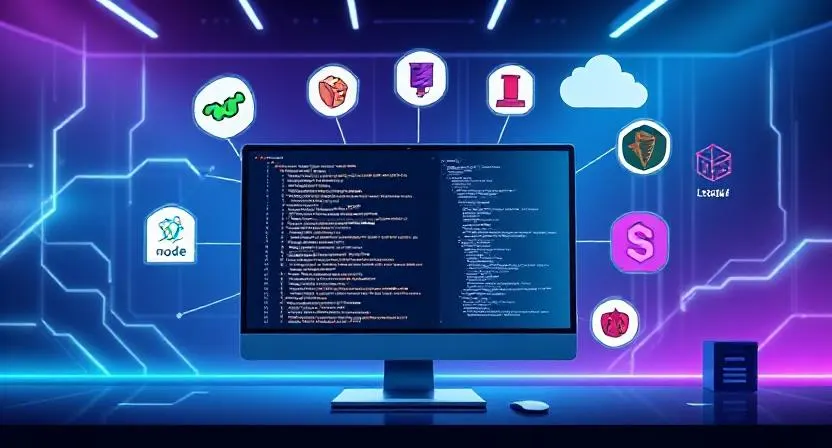In today’s fast-paced digital world, selecting the right backend framework for web development is crucial for building robust, scalable, and efficient web applications. A strong backend framework streamlines development, enhances security, and improves performance. Whether you’re a beginner or an experienced developer, understanding the best backend frameworks can help you make an informed decision. In this article, we explore the top backend frameworks for web development, highlighting their features, pros, and ideal use cases.
What is a Backend Framework?
A backend framework is a software toolset that helps developers build and maintain the server-side logic of a web application. It manages databases, authentication, security, and business logic, ensuring smooth communication between the frontend and backend components of an application. The best backend frameworks for web development provide structured workflows, security features, and efficient database management.
Top Backend Frameworks for Web Development
1. Node.js (Express.js)
Overview: Node.js, often paired with Express.js, is a lightweight and efficient backend framework for web development that runs JavaScript on the server side.
Key Features:
- Event-driven, non-blocking I/O model for high performance
- Vast npm package ecosystem
- Supports microservices architecture
- Seamless integration with frontend frameworks like React and Vue.js
Best For:
- Real-time applications (chat apps, gaming apps)
- RESTful APIs and microservices
- Single-page applications (SPAs)
Pros:
- Fast execution speed
- Strong community support
- Full-stack JavaScript development
Cons:
- Not ideal for CPU-intensive tasks
- Callback-based programming can lead to complexity
2. Django (Python)
Overview: Django is a high-level backend framework for web development built on Python, emphasizing rapid development and clean, pragmatic design.
Key Features:
- Built-in authentication and security features
- ORM (Object-Relational Mapping) for easy database handling
- Scalable and robust architecture
- Batteries-included approach (pre-packaged features)
Best For:
- Data-heavy applications (scientific computing, financial platforms)
- CMS platforms (content management systems)
- AI and machine learning projects
Pros:
- Highly secure with built-in protection against common vulnerabilities
- Encourages clean and maintainable code
- Scalable and efficient for large applications
Cons:
- Steeper learning curve for beginners
- Can be heavy for smaller projects
3. Ruby on Rails (Ruby)
Overview: Ruby on Rails (RoR) is a popular backend framework for web development that follows the MVC (Model-View-Controller) pattern, making development faster and more efficient.
Key Features:
- Convention over configuration (simplifies decision-making)
- Built-in security features
- Rich set of libraries (Gems) for extended functionality
- Scaffolding feature for rapid development
Best For:
- E-commerce platforms
- SaaS applications
- Social media applications
Pros:
- Rapid development cycle
- Strong community and extensive documentation
- Developer-friendly syntax
Cons:
- Performance issues for highly scalable applications
- Not ideal for real-time apps
4. Spring Boot (Java)
Overview: Spring Boot is a robust backend framework for web development, widely used in enterprise applications due to its powerful architecture and performance.
Key Features:
- Microservices-friendly architecture
- Built-in dependency management
- Secure and scalable
- Extensive support for database integrations
Best For:
- Enterprise-level applications
- Banking and financial systems
- Large-scale microservices architecture
Pros:
- Highly scalable
- Strong security features
- Comprehensive ecosystem with extensive libraries
Cons:
- Steeper learning curve
- Can be heavy for small projects
5. Laravel (PHP)
Overview: Laravel is one of the most popular backend frameworks for web development, known for its elegant syntax and ease of use.
Key Features:
- Built-in authentication system
- Eloquent ORM for database interactions
- Blade templating engine for dynamic content
- Artisan command-line tool for automation
Best For:
- Content-driven applications
- E-commerce platforms
- Small to medium-sized business applications
Pros:
- Simple and intuitive syntax
- Rich set of built-in functionalities
- Large community support
Cons:
- Slower performance compared to compiled languages
- Requires hosting with PHP support
Choosing the Right Backend Framework for Your Project
When selecting the best backend framework for web development, consider the following factors:
- Project Requirements: Choose a framework that aligns with your project goals, whether it’s a real-time application, an enterprise system, or a simple website.
- Scalability: Ensure the framework can handle growing user demands and future expansion.
- Community Support: A strong developer community provides better documentation, resources, and troubleshooting support.
- Performance: Consider the speed and efficiency of the framework, especially for high-traffic applications.
- Security: Opt for a framework with built-in security features to protect against cyber threats.
Conclusion
Selecting the right backend framework for web development is crucial for building secure, scalable, and high-performance applications. Whether you choose Node.js for real-time applications, Django for data-driven projects, Ruby on Rails for rapid development, Spring Boot for enterprise solutions, or Laravel for content management, each framework offers unique advantages based on your project’s needs. Understanding these frameworks and their strengths will help you make the best choice for your next web development project.
If you’re a developer or a business owner looking for a reliable backend solution, explore these frameworks to find the best fit for your project needs. Happy coding!










